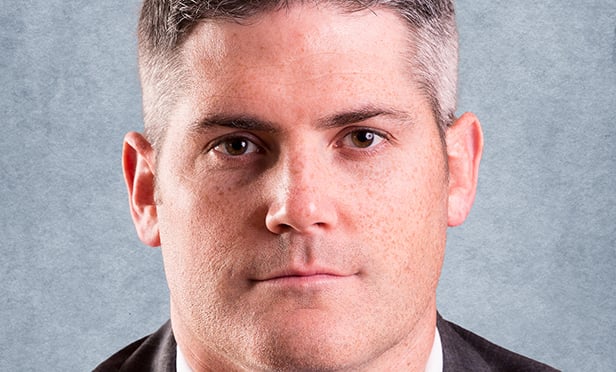LAS VEGAS—So how is a bifurcated economy and a retail market in the midst of massive internal operational change impacting you? James Cook, national director of analytics for GlobeSt.com Thought Leader Xceligent, sat down with Andrew J. Nelson, chief economist in the US at GlobeSt.com Thought Leader Colliers International, to get his insights on the show floor of RECon 2015 to discuss these and many more issues.
And then Cook turned the questions on himself, and writing them down with GlobeSt.com's John Salustri for this blog.
GlobeSt.com: Nelson talked about a bifurcated market, retailers opening more stores in high-volume areas like Rodeo Drive and fewer stores in the smaller markets. Thus they have smaller footprints and larger impact, largely because of e-commerce. Is this a negative to real estate?
James Cook: On the surface, it seems like fewer physical stores are a negative. Retailers are being more strategic about where they open stores, spending more money for high-value, high-traffic locations where rents are also more expensive. But fewer square feet and fewer locations does not necessarily mean less money spent on real estate. Selectively placing fewer stores in high-traffic locations can equal the cost a retailer would have spent on more locations in less-desirable spots.
GlobeSt.com: The economy is doing better than the media tends to report. Do you agree?
Cook: The media can send mixed messages about the economy, based upon results of the most recently released economic indicators. Even though the recession has been over since 2009, some consumers still have the perception that the economy is lousy. Partly that's because of the media, and partly it's a backlash against past irrational exuberance. But most people are feeling better about the economy. The University of Michigan Consumer Sentiment Index was up to 90.7 in May. That's a huge leap from its low of 55.8 in 2011. And according to the Bureau of Labor Statistics, the US has been adding jobs consistently each month since 2010, and the unemployment rate is now down to 5.4%.
GlobeSt.com: What worries you about the current cycle? Any noticeable headwinds?
Cook: In the retail world, new construction continues to be rather modest. Demand (in the form of absorption) continues to outpace supply. What new construction we've seen has come in areas of substantial demand like Lower Manhattan and in formats that are still quite under-served, like outlet centers.
GlobeSt.com: What do you think will be the next BIG THING in retail?
Cook: Technology continues to make the retail experience more enjoyable. For instance, chains like Chili's and Olive Garden are, or will be, adding tablets at tables to allow for quicker service and easier checkout. The tablets have led to bigger tips for servers, and quicker table turnover. With servers spending less time on these tasks, they're able to focus more on creating a positive experience for the diner. Smart phone apps and dedicated tablets will likely infiltrate every retail experience. Technology will continue to propel the growth of the two main differentiators that retailers cling to: price and experience. For those who compete on experience, there'll be new and exciting methods to augment reality in ways that we can't quite imagine yet, new in-person experiences that will keep the shoppers coming back for more. For discount retailers, there'll be continued growth in cost-saving efficiencies, also thanks to new technology.
GlobeSt.com: Your outlook for retail?
Cook: The web now serves as an incubator for retailers. The successful ones will someday transition into the physical locations. I feel optimistic for bricks and mortar. The clicks-to-bricks phenomenon is small but growing. However, headwinds do persist. Can they succeed in a world dominated by multi-channel consumers? I wasn't surprised, but a little disheartened to see that, according to a recent PwC CEO survey, only 19% of top retail CEOs said that they can fulfill omni-channel orders profitably. In the short term, an outlay of capital will be required to earn online market share. But in the long term, traditional retailers will have to create the efficiencies required to turn a profit.
© 2025 ALM Global, LLC, All Rights Reserved. Request academic re-use from www.copyright.com. All other uses, submit a request to [email protected]. For more information visit Asset & Logo Licensing.








